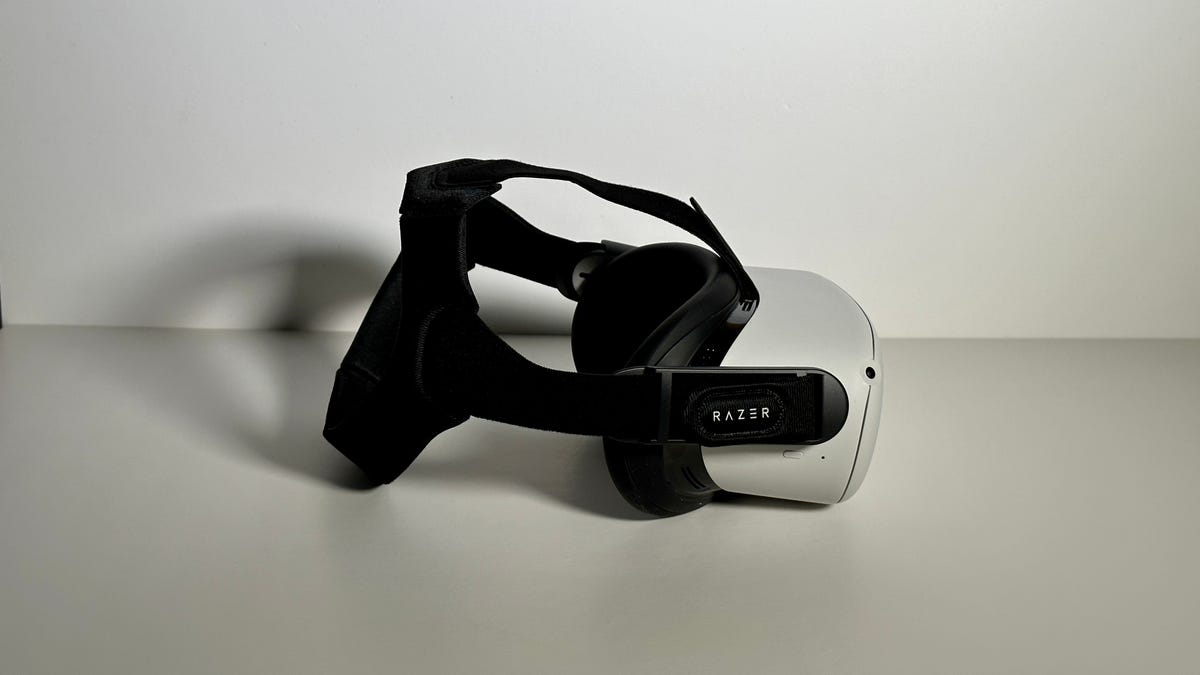 Why You Can Trust CNET
Why You Can Trust CNET Razer's Quest 2 VR Strap Hands-on Review: A Mostly Easy Fit
Razer's first Quest 2 accessories borrow from CPAP headstrap design, with comfort considerations. I like the strap, but not the face plate.

Razer's Quest 2 VR head strap adds comfort, and mostly I like it.
Razer has a lot of gaming hardware and accessories: It's now in the Meta Quest 2 VR accessory business, too. The first Meta Quest 2-compatible strap and face plate have just arrived after being announced at CES in Las Vegas earlier this year. Trying them both at home, I'm cautiously a fan (of the strap, at least).
The company has partnered with ResMed for the strap design and manufacturing process, which interests me because Resmed happens to make the CPAP machine I use every night. CPAP machines require head straps to get those awkward air masks on and fit snugly but comfortably. A similar goal's at play here, but for the VR headset on your face.
Razer's strap fits snugly, for sure (at least on my face), but rests differently than the standard elastic Quest 2 straps. After adjusting the Velcro on the sides and the top strap, the design lets you kind of just lower the headset over your face like a large VR baseball cap. At first, it feels like the back support won't hold, but it does. It feels a little less fussy, once set up, yet offers enough snugness that it should be good for intense sessions of Beat Saber.
I do wish the straps had a little more give, but maybe that's just me. Or maybe, much like CPAP straps, the elastic, padded strap system will eventually break in and be more fitted to my head.
I also let my 14-year-old son use it to play Beat Saber. (He's become a VR expert pretty fast.) He told me it fits nicely but a little weirdly: He too felt that the headset was almost strangely balanced on his head. But once you get over feeling like the headset may topple over and then realize it won't, it actually becomes very comfy. But in intense Beat Saber Expert Plus songs, he felt like it was a bit less secure than the standard Quest 2 strap.
Razer also has a silicone face mask insert that's designed to replace the foam padded one on the Quest 2. (Meta has its own silicone foam cover included with new Quest 2 hardware.) I'm less enthused about this one. First of all, the regular Quest 2 silicone-covered padding works fine for me. In addition, Razer's insert seemed to make my glasses fog up more. Maybe it has a tiny bit less ventilation? I don't know. I prefer less intense padding in my VR headset to help accommodate my thick glasses anyway. It does seem to block out more light, and Razer promises it's more antibacterial and sweat-resistant.
There's also the price to consider. The strap costs $70, and the face plate costs $70 too. Considering the entire Quest 2 costs $400, that's a lot to invest in extras. There's nothing really wrong with the included Quest 2 strap that comes in the box, which is free. But Razer's extra level of comfort could be worth it if you're ready for something else.
What interests me even more than these current Razer Quest 2 products, though, is what comes next. Razer plans to be an ongoing accessory maker for Meta now and will continue its partnership with ResMed. Will that mean Quest 3 accessories in the fall? Could it eventually mean controllers? Or other gaming accessories or VR-compatible peripherals? I'd love to see what's on deck. This isn't a bad start.

